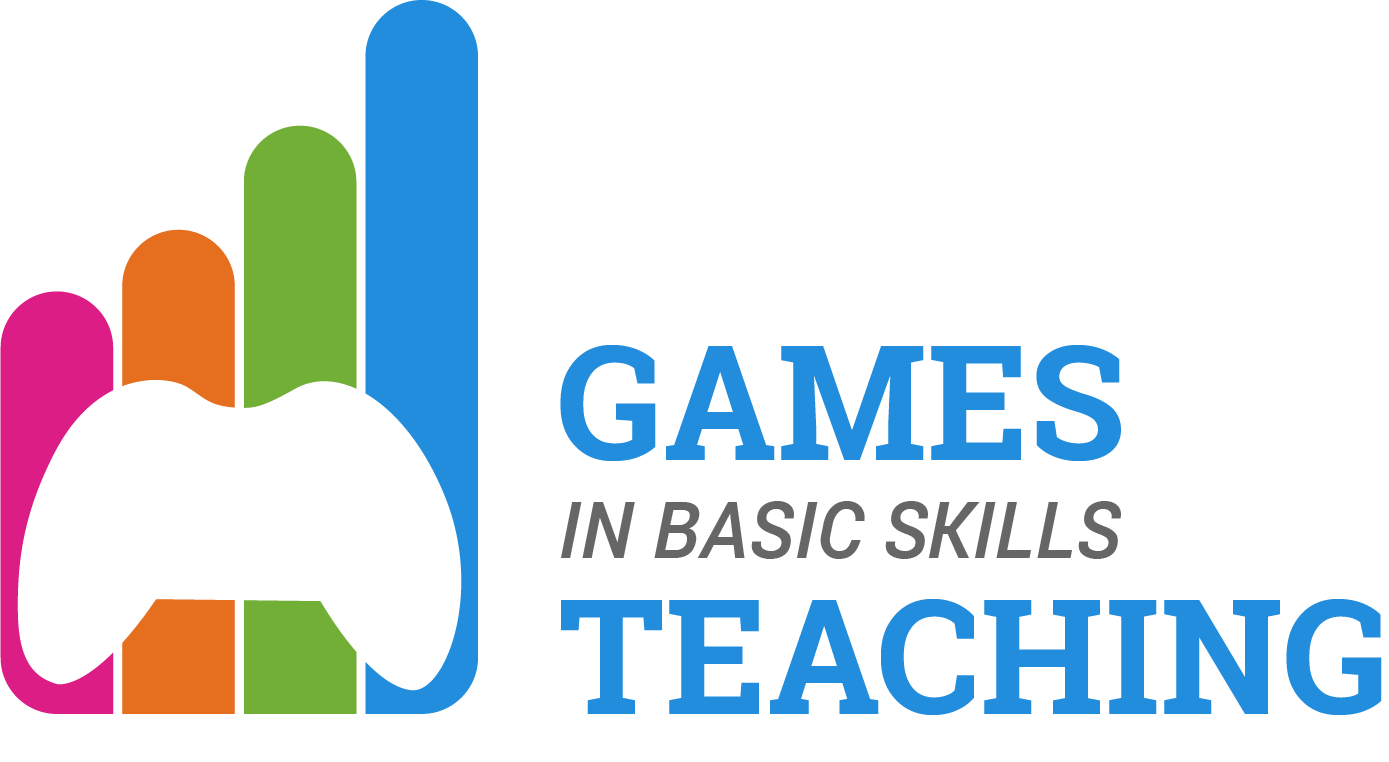Our appoach
ResultsWhat is different with our approach?
Even though there is validity in this approach and we also will mostly follow a similar structure, there are some caveats that we would like to address with our guidebook. The title of our guidebook “There is a Game for Everyone” tries to illustrate that we share a broader approach to understanding the value of games and play while at the same time being more specific in certain aspects of applying games in class that we deem valuable for consideration.
When starting out on our project, we soon had to realize that we struggled with the very basics of what our project set out to do. Using Games for Basic Skills Teaching meant bringing games and game-like experiences to these classrooms. We all agreed on the added value that this approach can bring to the students and to the classes, but what game and in which class and how to align that with the lesson structures and the curricula, was an ongoing discussion. What were the specific settings and the equipment at hand, who was the target group and how much did they know and use games beyond their classes? We quickly realized that there were so many specific conditions and settings that it seemed to make sense to start at the very beginning by having a look at the essence of what we set out to work with in the project. So, we started by answering a few basic questions.
What is a game? Is it different to Play? Do we only play serious games in class? Are digital games better suited for classroom use? Is gaming in Basic Skills only valuable for gamers? Is there a topic or a target group that might not be suitable for games for learning?
The answers we came up with were diverse due to the fact that there were so many aspects to be considered, not only the setup, the curriculum and the game were relevant for teaching with games in Basic Skills teaching, but also the experience of the teachers and the students as well. Due to this realization, we considered what else, besides the already existing work, might be important for teachers and educators to bring games to a (basic skills) classroom. The following work is the result of our considerations and we hope to fill some gaps that still seem to exist in the literature on the application of games for learning. The guidebook will present two approaches of the work with games in teaching, one that is more hands-on called Games and Teaching Track and a second one called Research and Discussion Track that dives more deeply in the discussions we had when trying to grapple with the concepts and how they can be applied to our specific target groups and courses. So, in the guidebook you will find two paths to follow for each headline, one that focuses on the games and how they fit into our teaching and one that presents relevant aspects to consider when working with games in teaching. You can read both to get the full picture or only follow one track and hopefully still learn something new about how to bring games to the classroom. A second major part of the guidebook will exemplify how these considerations were translated to the classrooms at hand and what we as teachers and our students experienced when games and play came to their classroom. Later there will be a summary of our whole experience and what we learned from them. To round it up you will also find a link to the learning course we created over on Canvas.

